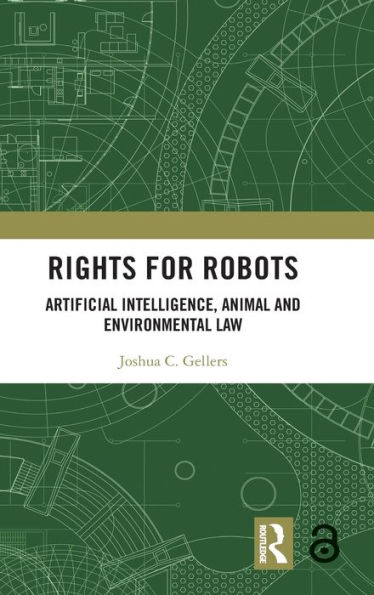Through extensive philosophical and legal analyses, the book explores how rights can be applied to nonhuman entities. This task is completed by developing a framework useful for determining the kinds of personhood for which a nonhuman entity might be eligible, and a critical environmental ethic that extends moral and legal consideration to nonhumans. The framework and ethic are then applied to two hypothetical situations involving real-world technology—animal-like robot companions and humanoid sex robots. Additionally, the book approaches the subject from multiple perspectives, providing a comparative study of legal cases on animal rights and the rights of nature from around the world and insights from structured interviews with leading experts in the field of robotics. Ending with a call to rethink the concept of rights in the Anthropocene, suggestions for further research are made.
An essential read for scholars and students interested in robot, animal and environmental law, as well as those interested in technology more generally, the book is a ground-breaking study of an increasingly relevant topic, as robots become ubiquitous in modern society.
The Open Access version of this book, available at http://www.taylorfrancis.com/books/9780429288159, has been made available under a Creative Commons Attribution-Non Commercial-No Derivatives 4.0 license.
Through extensive philosophical and legal analyses, the book explores how rights can be applied to nonhuman entities. This task is completed by developing a framework useful for determining the kinds of personhood for which a nonhuman entity might be eligible, and a critical environmental ethic that extends moral and legal consideration to nonhumans. The framework and ethic are then applied to two hypothetical situations involving real-world technology—animal-like robot companions and humanoid sex robots. Additionally, the book approaches the subject from multiple perspectives, providing a comparative study of legal cases on animal rights and the rights of nature from around the world and insights from structured interviews with leading experts in the field of robotics. Ending with a call to rethink the concept of rights in the Anthropocene, suggestions for further research are made.
An essential read for scholars and students interested in robot, animal and environmental law, as well as those interested in technology more generally, the book is a ground-breaking study of an increasingly relevant topic, as robots become ubiquitous in modern society.
The Open Access version of this book, available at http://www.taylorfrancis.com/books/9780429288159, has been made available under a Creative Commons Attribution-Non Commercial-No Derivatives 4.0 license.

Rights for Robots: Artificial Intelligence, Animal and Environmental Law
190
Rights for Robots: Artificial Intelligence, Animal and Environmental Law
190
Product Details
| ISBN-13: | 9780367211745 |
|---|---|
| Publisher: | Taylor & Francis |
| Publication date: | 10/28/2020 |
| Pages: | 190 |
| Product dimensions: | 6.12(w) x 9.19(h) x (d) |
